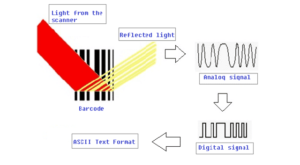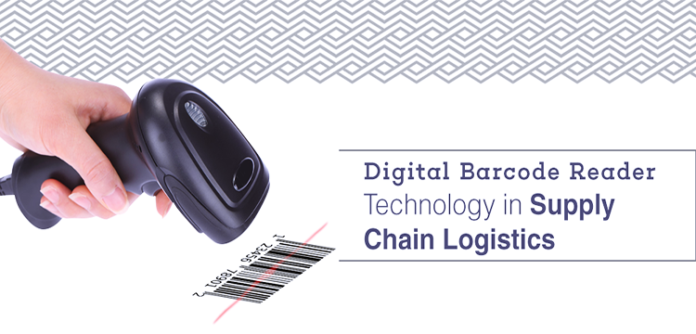Ever wondered how a barcode determines the rate of the product and how a barcode scanner scans the black and white stripes and identifies the rate. This article explains how the rate can be determined by using a barcode.
It’s an image that consists of a series of parallel black and white bars which can be read by a barcode scanner, barcodes are applied to products so that we can identify them using barcode scanners. The combination of black and white bars is known as elements, these elements represent varying text characters that follow a pre-established algorithm for that particular barcode. They are widely used in retail stores as a part of the purchasing process, in managing inventory and on invoices as well.
Barcodes are scanned by using a barcode scanner. It is a device which helps in decoding the information contained by a barcode. Barcode scanners have four components.

- Light source: This helps in reading the barcode and decoding the information in it.
- Lens: to scan the barcode.
- Photoconductor: translates optical impulses into electrical ones.
- Decoder: analyzes the barcode’s data and sends it to the scanner’s output port.
After getting the information as mentioned in the above steps, barcode scanners link to a host computer and transfer that information in real-time (displaying in the information on a computer screen).
Representing the numbers 0-9 on barcodes
- Each digit in a barcode is represented by seven equal-sized vertical blocks and is colored in either black or white to represent the decimal numbers 0-9.
- Every number ultimately contains four fat or thin black and white stripes and its pattern is designed so that, even if you turn it upside down, it can’t be confused with any other number.
Most products carry a simple barcode called Universal Product Code (UPC), which is a line of vertical stripes with a set of numbers printed just below it. The reason behind printing this set of numbers is if the barcode is misprinted or somehow damaged while handling the product, someone can manually enter the product number into the system. To get a UPC to use on any product, a company needs to apply through GS1 India (GS1 stands for Global Standards Organization and it varies from country to country, meaning it is GS1 US in the US).

TYPES OF BARCODES:
There are two types: 1-dimensional and 2-dimensional
1D barcodes: This type of barcodes is a series of black and white bars that store information about the type of product, size, and color.
2D barcodes: These are more complex than 1D barcodes, 2D barcodes include more information than 1D barcodes. They include price, inventory levels, and also an image of the product along with product type, size, and color.
The above information clarifies how barcodes are made and how a scanner works. According to the above explanation, suppose you are at a checkout counter at Dmart, the cashier scans a coke bottle that has a barcode. The scanner sends the information to the Central POS system and the already stored details of the price project them on the computer system. If there are any other cans of coke the computer adds a quantity that means both of the cans have the same barcode. To simplify, when a company produces similar products of large quantities, all of them will have the same barcode number which is scanned by the scanner. The UPC code of the barcode is already stored in the central database of the shopping mall which helps to determine the price of the product. The UPC numbers may differ from manufacturer to manufacturer.
-KALYAN (FrontlinesMedia)





